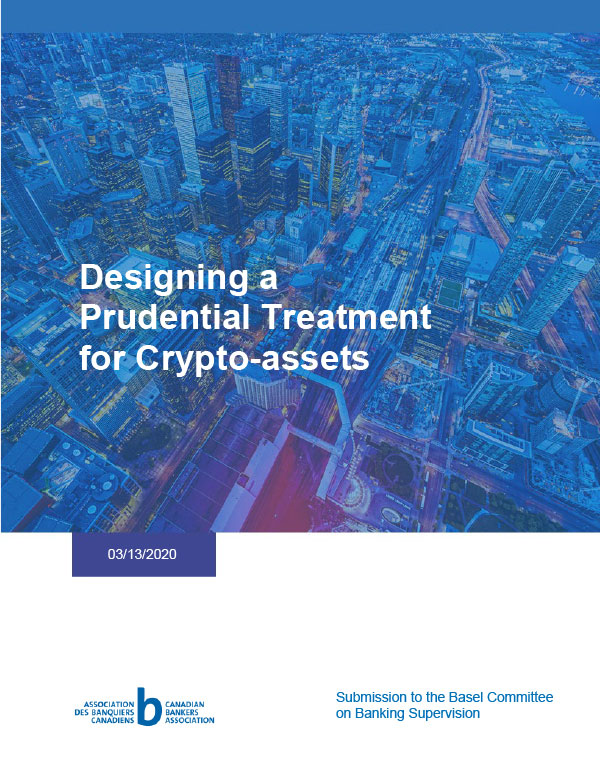By Alana Barnes, Advisor, Fintech, Banking Transformation and Strategy, Bryan Radeczy, Advisor, Financial Affairs, and Randy Hopkins, Policy Lead, Payments
The banking sector, both in Canada and around the world, has undergone significant change over the past decade, with many consumers seeking more convenient and efficient ways to carry out their daily transactions in a digital age. To be sure, the coronavirus pandemic has only accelerated the movement to electronic payments and Internet‑enabled services as we adapt to a new normal guided by an increasingly digital‑first mindset. Tied to that, steady advancements are being made in exploring the merits of real‑world applications for crypto‑based technologies like national digital currencies.
Long before the COVID‑19 outbreak, banks in Canada introduced advanced and trusted platforms for their services, while always remaining dedicated to protecting their customers’ privacy and data. Canada’s six largest banks have invested more than $100 billion in technology since 2008‑09 to keep pace with a changing world, which has paid off during the present crisis. Our country’s banks continue to adopt new forms of technology to meet the evolving preferences of their customers, while at the same time providing all‑important trust and stability as regulated financial institutions.
Digital technology continues to develop at breakneck speed, bringing revolutionary inventions that may redefine global finance in the years to come. These innovations, however, also introduce new risks and vulnerabilities that must be addressed to maintain confidence and stability in financial markets.

What are stablecoins?
A "stablecoin" is a new, hybrid type of cryptocurrency that is designed to minimize the volatility of its price because it is pegged to a "stable" real‑world asset or basket of assets like traditional fiat currencies or commodities. Proponents of stablecoins champion them for their low volatility, which has always been a drawback of other crypto‑assets. Moreover, stablecoins have the added upside of promoting, among other things, faster international transfers and enhanced efficiency of financial services in a digital world. Financial institutions in Canada and elsewhere generally agree that more needs to be done to improve the efficiency of payments processing.
Stablecoins, like other crypto‑assets, have captured much attention in recent years, perhaps most notably with the unveiling of Facebook’s Libra project in 2019. While Libra has since experienced significant setbacks and pointed criticism by policy makers and regulators, the project has sparked global discussions about the next evolution in the fast‑moving world of payments, remittances and the future of money. To some extent, these discussions have accelerated work by central banks around the world, including the Bank of Canada, on the potential introduction of a Central Bank Digital Currency.
At the same time, stablecoin projects may also generate significant risks to monetary systems and financial stability and may pose undue risk to consumers who put their faith in them. Indeed, the risks are so considerable that regulators in many countries, as well as multilateral organizations including the G7 and G20, have publicly stated that issuance of stablecoins should not be allowed until the various global risks they pose have been fully addressed.
Addressing regulatory, supervisory and oversight challenges
The activities associated with "global stablecoins" and the risks they may pose can span across financial services within jurisdictions and across borders. These potential risks may change over time and therefore challenge the effectiveness of existing regulatory, supervisory and oversight approaches. Ensuring the appropriate coordinated regulatory approach domestically and globally will therefore be important.
Finance chiefs of the G20 major economies agree that while stablecoins could have potential benefits of financial innovation, they give rise to a range of serious public policy and regulatory risks. To that end, following on earlier observations by the G7 Working Group on Stablecoins, the G20 mandated the Financial Stability Board (FSB) in June 2019 to examine regulatory issues raised by "global stablecoin" arrangements (GSCs) and to advise on multilateral responses as appropriate. In February 2020, the G20 repeated the importance of evaluating and appropriately addressing the risks of GSC arrangements before they commence operation and supported the FSB’s efforts to develop regulatory recommendations with respect to these arrangements. In response to these requests, the FSB published 10 high‑level recommendations in April 2020 that are "addressed to authorities at jurisdictional level to advance consistent and effective regulation and supervision" of GSC arrangements.
The final FSB recommendations, taking on board feedback from the public consultation, will be published in October 2020. The Canadian Bankers Association (CBA) has a strong interest in the efficiency, safety, and soundness of the payments and broader financial system, and as such, provided comments on this important topic.
Click on the image below to read the CBA’s full submission to the FSB’s consultation, in which we detail our support for a holistic, risk-based approach grounded in the following principles:
- Regulators should take a steady and measured approach and act in a timely manner when considering any possible GSC arrangements. Particular attention should be paid to those initiatives led by or involving non‑regulated market participants, including ensuring oversight of their activities;
- Any oversight and regulatory treatment should be commensurate with the underlying risks and should consider the different types and uses of GSCs in the market;
- A principles‑based approach is needed that strikes a balance between the goals of effective oversight and fostering innovation, thereby allowing the market to continue to grow and evolve; and,
- Regulatory authorities should work together in a coordinated manner and engage in ongoing dialogue with key stakeholders.

Related to this topic, in March 2020 the CBA also provided input to the Basel Committee on Banking Supervision on designing a prudential treatment for crypto‑assets, which articulated the above principles in the same manner.
